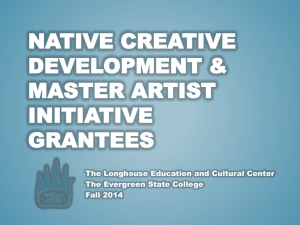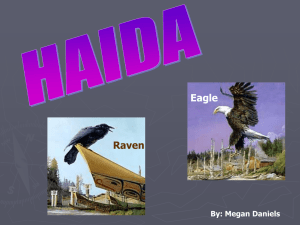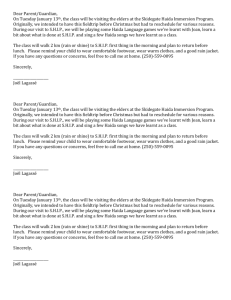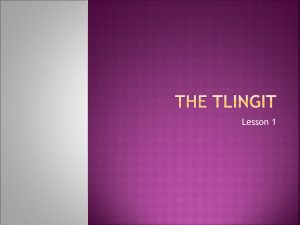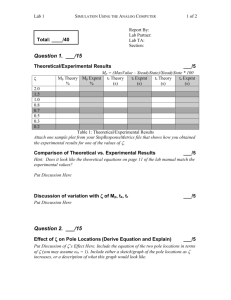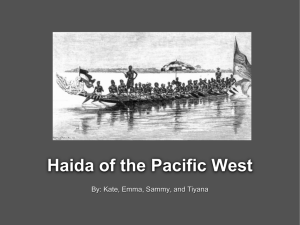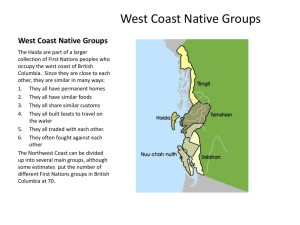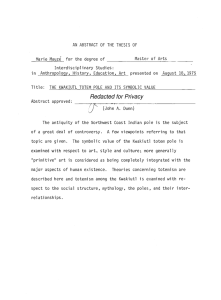Poles
advertisement
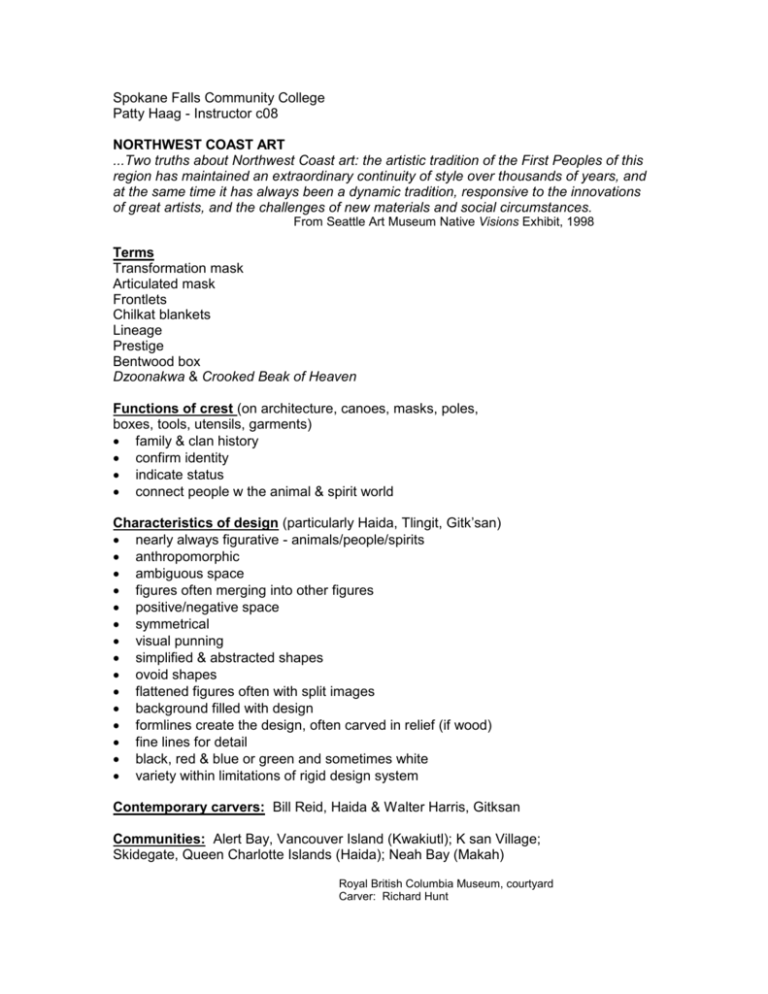
Spokane Falls Community College Patty Haag - Instructor c08 NORTHWEST COAST ART ...Two truths about Northwest Coast art: the artistic tradition of the First Peoples of this region has maintained an extraordinary continuity of style over thousands of years, and at the same time it has always been a dynamic tradition, responsive to the innovations of great artists, and the challenges of new materials and social circumstances. From Seattle Art Museum Native Visions Exhibit, 1998 Terms Transformation mask Articulated mask Frontlets Chilkat blankets Lineage Prestige Bentwood box Dzoonakwa & Crooked Beak of Heaven Functions of crest (on architecture, canoes, masks, poles, boxes, tools, utensils, garments) family & clan history confirm identity indicate status connect people w the animal & spirit world Characteristics of design (particularly Haida, Tlingit, Gitk’san) nearly always figurative - animals/people/spirits anthropomorphic ambiguous space figures often merging into other figures positive/negative space symmetrical visual punning simplified & abstracted shapes ovoid shapes flattened figures often with split images background filled with design formlines create the design, often carved in relief (if wood) fine lines for detail black, red & blue or green and sometimes white variety within limitations of rigid design system Contemporary carvers: Bill Reid, Haida & Walter Harris, Gitksan Communities: Alert Bay, Vancouver Island (Kwakiutl); K san Village; Skidegate, Queen Charlotte Islands (Haida); Neah Bay (Makah) Royal British Columbia Museum, courtyard Carver: Richard Hunt Cultural style: Kwakiutl (Kwakwaka’wakw) Poles Poles were carved from the trunk of a single western red cedar. To remove the tree from the ground and prepare it for carving, the tree was either burned at the base by placing red-hot rocks in a deeply chiseled cavity in trunk, or cut by splitting out the wood from between two grooves cut into and encircling the trunk. Poles are historical monuments of great meaning & value to Indian cultures. They document information on origins & lineages; rights & privileges; supernatural experiences, exploits & achievements, acquisitions & territories; and marriages & memorials. These recorded histories gave people cultural identity & proclaimed their wealth & status in the village & within their nation. Hilary Stewart-Looking at Totem Poles Types of poles frontal (Haida) stood against front of house w doorway to one side entrance pole (Haida, some Kwakiutl, Gitksan, Nuxalk) ceremonial entrance interior house posts (Nuu-chah-nulth, Kwakiutl) for high-ranking chiefs Carved with emblems of family histories, they were an integral part of frame construction & added prestige. memorial pole (Haida, Tlingit, Tsimshian, Kwakiutl, Nuu-chah-nulth & Nuxalk) Located in front of but not attached to house. These usually had a single crest at the base and/or top, though sometimes they were elaborately carved. Memorial poles were raised a year or more after the death of a chief, & displayed crests & figures depicting special achievements/events in deceased person’s family history. The succeeding chief gave the memorial potlatch, which also served to validate his new position (a year gave host family time to prepare & gather gifts/food for the potlatch). welcome (Nuu-chah-nulth, Kwakiutl) These were situated on or near the beach, especially for a potlatch or a feast. mortuary (Haida, Tlingit) These were made for those of high rank. They were carved with crests of the deceased. A large cavity was cut into the upper end (the log was inverted to allow greater space for cavity at top). Haida: body placed in bentwood box which was then put in mortuary house; a year later remains placed in smaller, undecorated box & deposited in cavity of mortuary pole; cedar board made to resemble bentwood box covered the cavity at front (called a frontal board) usually painted w main crest of deceased; additional planks covered top & rocks on top for security against wind Tlingit: high-ranking person often cremated, ashes placed in a container, then into a niche at back of the pole. shame The only examples exist in museums (Burke, Seattle). These were usually carved for a chief or high-rankling person who wanted to ridicule or shame another (often a rival). The pole served as a public proclamation of misdeed, long-standing unpaid debt or other incident worthy of scorn. It usually represented the person in question in an unflattering attitude. The pole came down when restitution was made. Healing Contemporary form; healing pole carved by Jewell James, Lummi tribe, in memory of victims & families of 9/11 carved & carried across the country to NYC in summer of 2002; prayers given at each stop along the way by tribal elders
